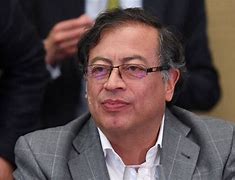In the bustling corridors of power and policy, decisions are made that can shape the future of nations. Among these decisions, one such move has sent ripples through the scientific community and beyond – President Trump’s proposed cuts to science funding.
As the clock ticks on Trump’s first 100 days in office, a cloud of uncertainty looms over research laboratories and academic institutions across America. The latest buzz from Washington hints at drastic reductions in federal support for scientific endeavors. A recent study conducted by economists at American University rings alarm bells, suggesting that these budget slashes could have far-reaching consequences for the nation’s economy.
Expert Analysis:
Dr. Sarah Johnson, a renowned economist specializing in government policies, sheds light on the potential fallout of such funding cuts. “Scientific research is not just about making groundbreaking discoveries; it is an essential driver of economic growth,” she explains. “By slashing support for research and development, we risk stifling innovation and hampering long-term productivity gains.”
The battleground between politics and science escalates as billions of dollars in grants to esteemed scientists at prestigious universities face cancellation or freezing under the current administration’s directives. Institutions like Columbia and Harvard find themselves caught in the crossfire, with their research projects hanging precariously in the balance.
In-Depth Analysis:
Diving deeper into the issue reveals a stark reality – reducing federal funding for scientific initiatives could inflict economic wounds akin to those seen during major recessions. The implications are dire; a mere 25% cut in public backing for research and development could trigger a domino effect leading to a substantial decline in economic output over time.
The repercussions extend beyond immediate financial losses; they strike at the heart of American competitiveness on a global scale. Areas crucial for future advancements like vaccine development, artificial intelligence, and quantum computing stand vulnerable to stagnation if deprived of adequate governmental support.
Real-World Impacts:
Imagine a world where vital medical breakthroughs remain elusive or technological innovations stall due to lack of resources – this grim scenario becomes plausible under an atmosphere devoid of robust scientific funding mechanisms.
As policymakers weigh their options amidst mounting pressure, voices from academia and industry unite in highlighting the irreplaceable role played by public investment in basic research. Unlike private entities driven by short-term gains, government-backed initiatives dare to venture into uncharted territories where risks are high but rewards monumental.
The narrative unfolding before our eyes paints a portrait of uncertainty tinged with apprehension as researchers brace themselves for turbulent times ahead. Will innovation be stifled? Can America retain its edge in cutting-edge technologies without adequate financial backing?
In this intricate dance between budgets and breakthroughs lies the fate of generations yet unborn – where decisions made today echo through time shaping tomorrow’s landscape.








Leave feedback about this